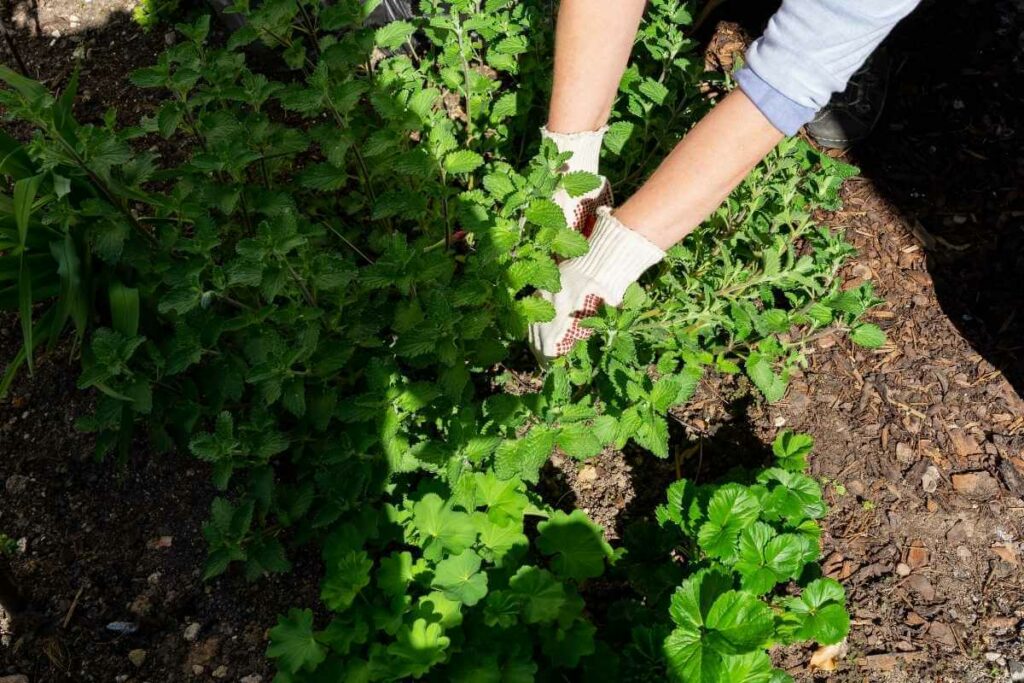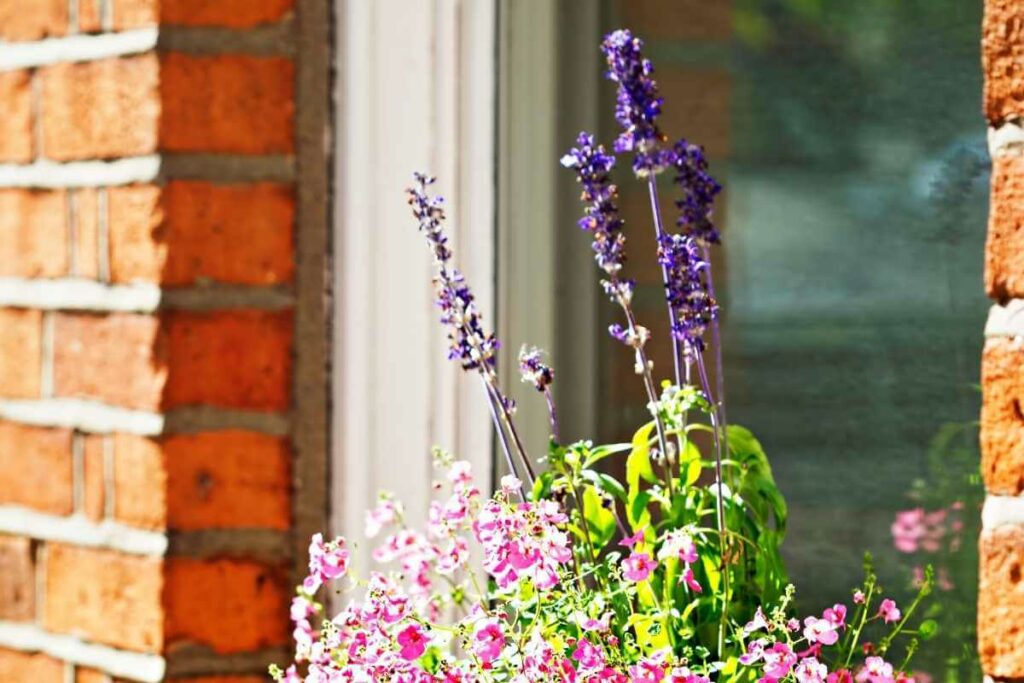Catmint is a popular plant amongst landscapers and household gardeners because of the beautiful foliage and the beneficial properties it could have on your health.
However, it isn’t the easiest plant to keep in shape and can be known for flopping. Having many gardeners asking, “why is my catmint floppy?”
Catmint can go floppy for a few different reasons and can be corrected with time and maintenance. Your catmint can be floppy because the plant is ill or weak, it is getting too robust and needs to be pruned or sheered, or the environment isn’t ideal for this plant to thrive in.
No matter the reason your catmint plant may be floppy, continue reading this article for the best ways to identify the problem and then correct it effectively.
What Is Catmint?
Catmint is a pretty purple perennial that can grow from early spring into the late fall.
These plants are full and, depending on the species, can grow pretty large.
Like most other herbs, catmint is known for its medicinal benefits and its ability to have a calming effect on humans.
Catmint, like lavender, is used for its calming effects and stress-relieving properties.
People will use this herb when they are feeling overwhelmed, stressed out, or can not sleep well.
Less-known Fact: Thanks to these plants’ anti-inflammatory and other properties, it is often also used for stomach aches, hives, respiratory issues, arthritis, etc.
Why Is My Catmint Floppy?
As mentioned above, catmint can grow pretty tall, commonly seen up to around 2 or 3 feet.

And without proper care and maintenance, it will start to look more like weeds and start to flop and look less than appealing.
If you are struggling with floppy catmint, here are some issues you may need to address.
Lack of Sun
Catmint thrives in a full-sun location, and while it can do just fun in partial shady situations, anything less than that will affect the strength of your plant and cause it to start sagging over.
Lack of Maintenance
The catmint plant is always on the move and growing up and out; without proper shearing and pruning, your plants cant get out of control and will start to flop over and look like a bunch of weeds.
Old Age
As catmint ages, the steams and roots will start to weaken and die, which will cause the plant to bend at the weak point and flop down.
This is especially true in windy or rainy weather, where extra pressure is put on the frail flower.
Dying Plants
If your plant is dying (usually from the root up), you may not notice any issues at first except that your plant is sagging.
There are many reasons your plant may be dying, but we will get into that in a later section.
How Do You Stop Catmint from Flopping
Once you start to notice that your catmint is starting to separate at the roots or flopping over, it may be time to do something about it. There are a few different ways you can keep your plants standing upright and prevent too much flopping.
Cutting Back
You may want to consider cutting back your catmint, which is simply trimming the steams or pruning your plant.
You do this with a pair of gardening scissors and just take off a few inches from the top of the “flopping” steams.

By doing this, you are taking added weight off of the steam and allowing the plant to hold itself up. You are also ridding the plant of possible damaged or weak steams.
When you cut back the steam of your catmint, you are also giving the budding flowers and leaves the options to grow and expand elsewhere, evening out the weight and growth of the plant.
Added Benefits of “Cutting Back” or “Pruning” Your Catmint?
When you shear back your plant, you are creating a healthier new growth that will keep the plant thriving well into the fall and longer than the older plants that haven’t been touched.
Another benefit gardeners seem to rejoice in is less stem growth after cutting back your plant.
Because so much energy goes into the plant re-growing multiple steams after sheering, the new steams seem to stay much shorter than the ones before them, making maintenance much easier.
Tieing Them Up
Sometimes simply pruning your catmint is not going to help the taller, more floppy catmint plants.
In these cases, you may have to tie your catmint up straight with a stake and gardening rope.
You do this by playing the stake directly next to the plant’s main root and carefully tying the root to the sturdy stake.
Doing this will help the plant stand strong and allow for the rest of it to grow while you are helping it become stronger, or at least last throughout the season until you cut back the whole thing.
Something to Consider: Because the plant can grow out up to three feet in diameter, some people will use multiple stakes or fencing and create a square or circle underneath the plant to help keep all of the steams from flopping over.
Removing the Dead Bulb or Flower
Removing the dead flower goes along with sheering your plants.
However, instead of clipping way down the root, just remove the browning or dead flower.
Getting rid of the rotting flower will help the flopping of the plant tremendously.
Why Is My Catmint Turning Brown and Flopping?
There are times when you might see your catmint turning brown and flopping over.
This is the sign of a dead flower and plant and is usually caused by root rot.
Too Much Water
There are a few different causes of root rot, with one of the main culprits being a pooling of water around the root of your plant where there is no effective drainage system put into place.
This is more common amongst house plants but can be an issue if your garden does not have the right soil or setup.
Fungi or Mold
Fungi is one of the top causes of root rot and can kill a Catmint plant quickly if not taken care of the first signs.

One of the first signs of root rot caused by fungal infection is floppy flowers.
Another sign is a powdery mildew build-up around the root of the plant and along with its steam.
Bug Infestation
A bug infestation is a big problem when it comes to the death of a catmint plant.
Spider mites, Thrips, and other plant-eating insects are known for completely destroying an entire catmint garden if not caught in time or managed efficiently.
If you notice that your catmint is not only saggy, but the flowers are dying, or the stems and roots are turning brown, you may have a much bigger problem on your hands than you may think, and it is imperative you act fast.
Summing Things Up
Your catmint plant could be sagging because it is not being maintained properly or because outside pests and other outside environmental conditions are negatively impacting its growth.
With a little work and a lot of TLC, your plant can be back to looking beautiful in no time.
Also Useful
- How to Pick Mint Leaves Without Killing the Plant
- How to Get Big Mint Leaves
- How to Grow Celeriac from Cuttings?
